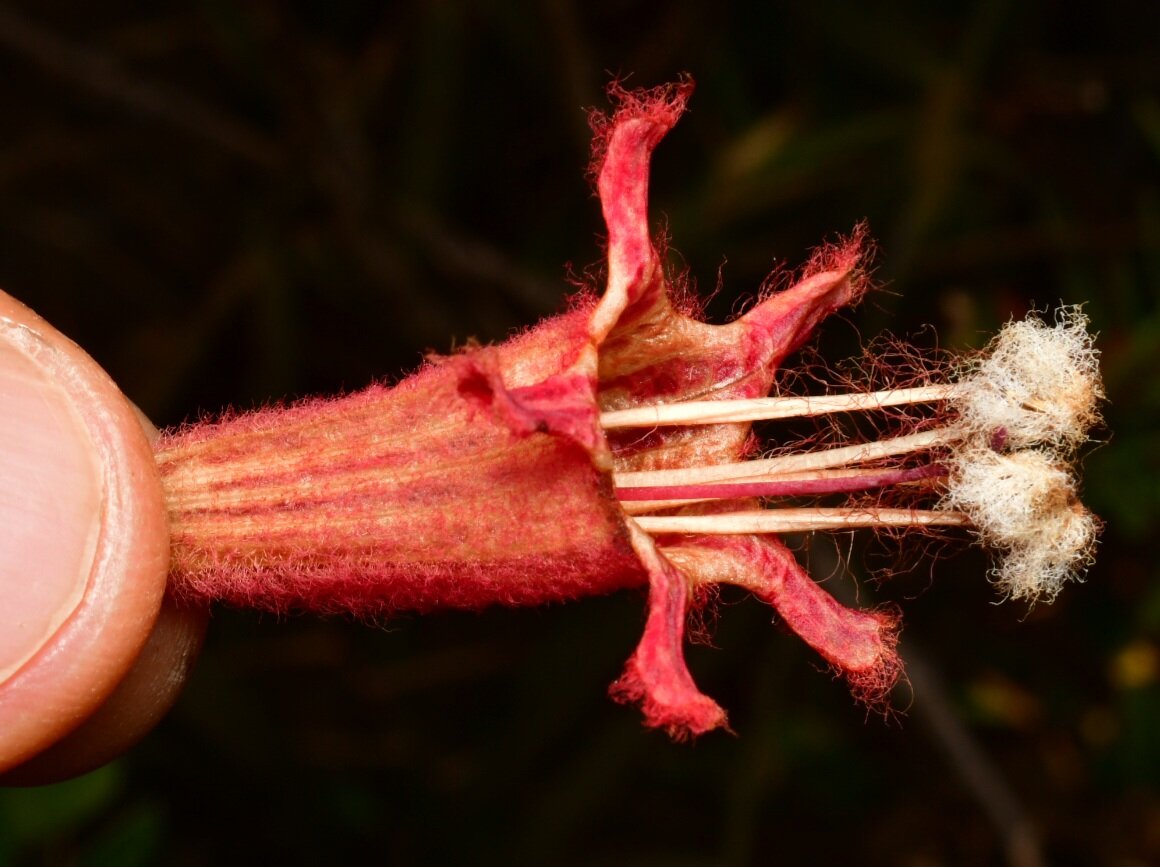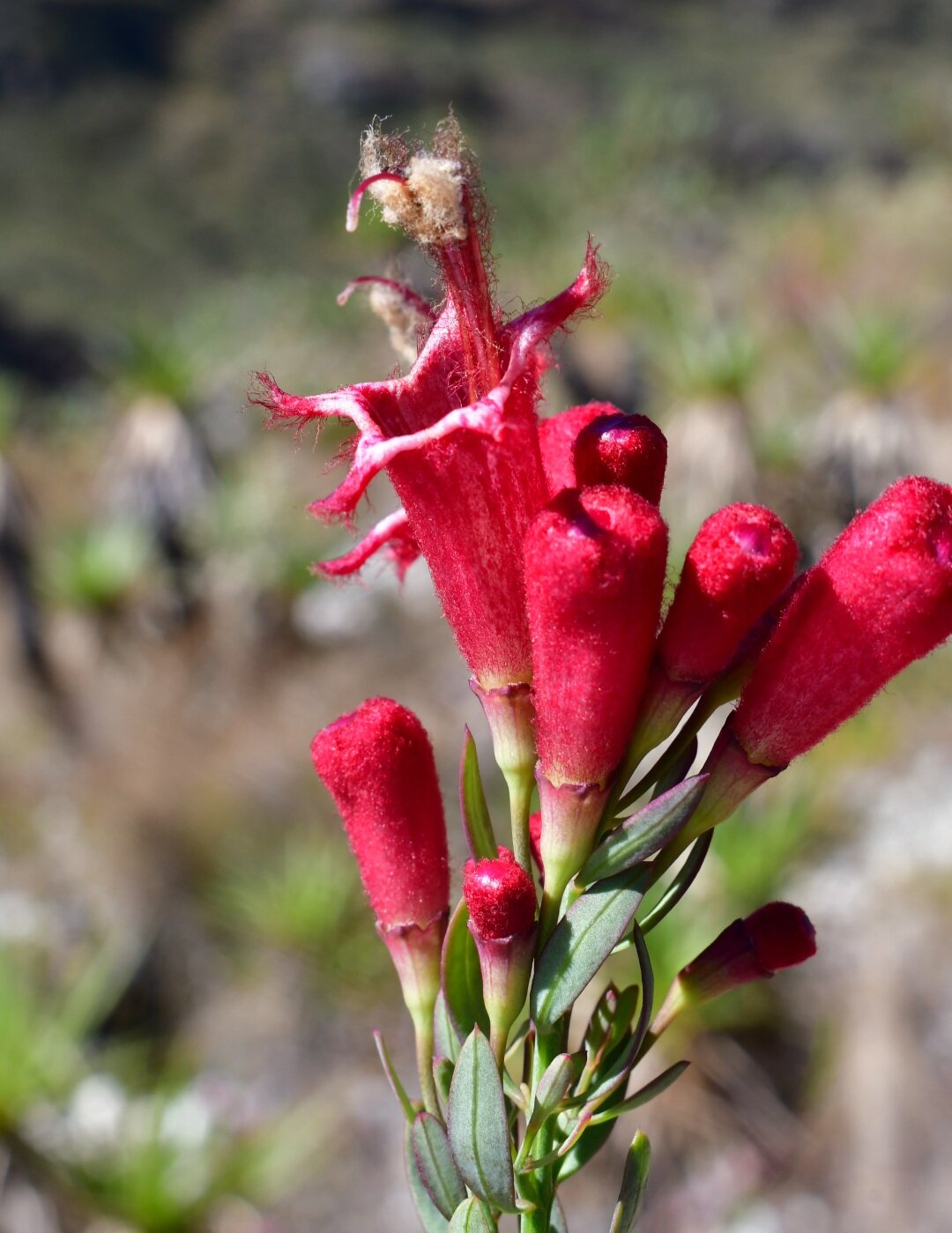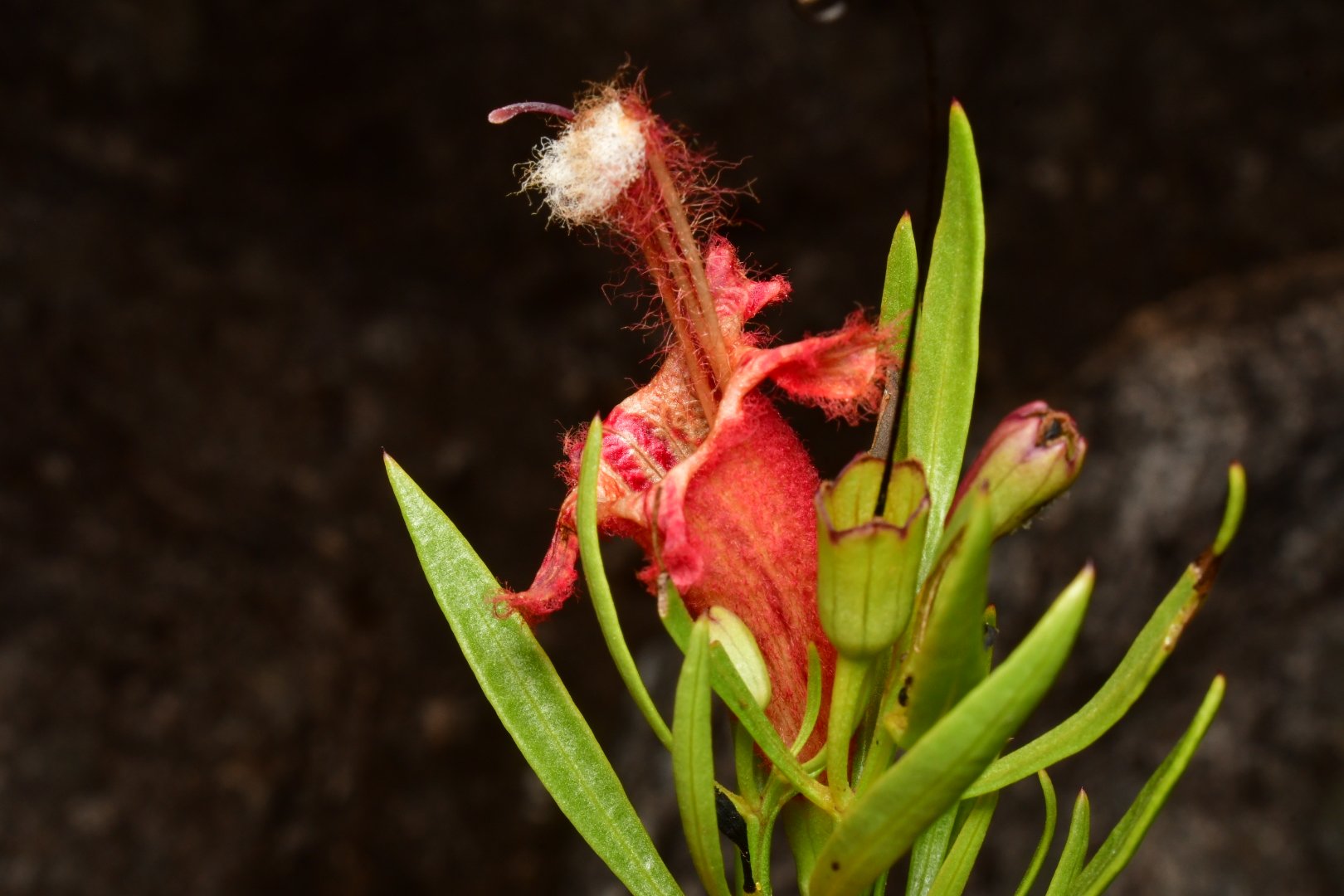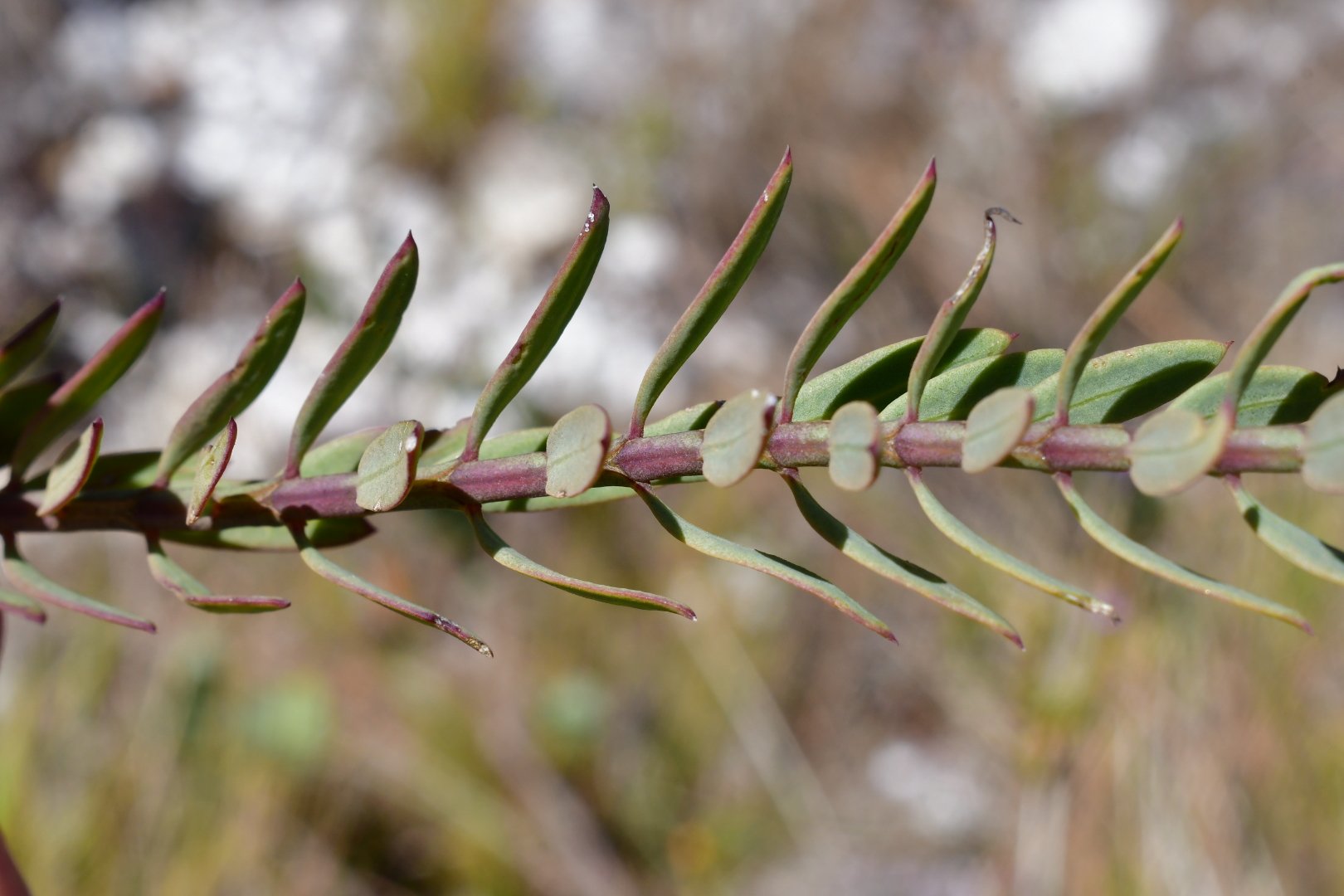Powder-Puff Anthers of Esterhazya
WHAT DENSELY PUBESCENT ANTHERS YOU GOT THERE.
If you’re a big, red tubular flower from a seasonally-dry environment and you’re pollinated by hummingbirds with long beaks, it helps to have your stamens all hangin’ out, exserted prominently out of the otherwise enclosed “tube” of your flower. Otherwise, those anthers wouldn’t be able to dab pollen on to the heads of the birds that pollinate you and members of your population wouldn’t get pollinated, seeds wouldn’t be produced, and your population would be doomed.
However, the problem with having prominently exserted anthers that are not protected by being enclosed inside a flower (like many bee-pollinated flowers are) is that those large anthers are not exposed to the drying winds of your seasonally-dry neotropical environment, not to mention how much pollen might be simply lost to wind currents.
The genus Esterhazya seems to have gotten around this by producing intensely villous hairs on its anthers (produced on the epidermal layer on the walls of the anther thecae), which undoubtedly help harbour and retain pollen once it has dropped out of the anthers.
Depending on how many species one recognizes, Esterhazya is comprised of between 8-12 species in the paintbrush family, Orobanchaceae, all from somewhat drought-prone biomes in South America.
Hairs (aka trichomes) on anthers are somewhat common in the family Orobanchaceae as can be seen in the genera Agalinis & Lamourouxia, but no genus seems to produce them so densely nor display them so prominently as Es
terhazya.



